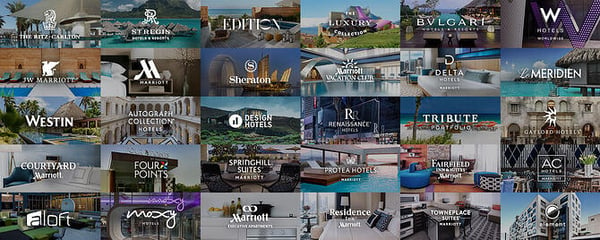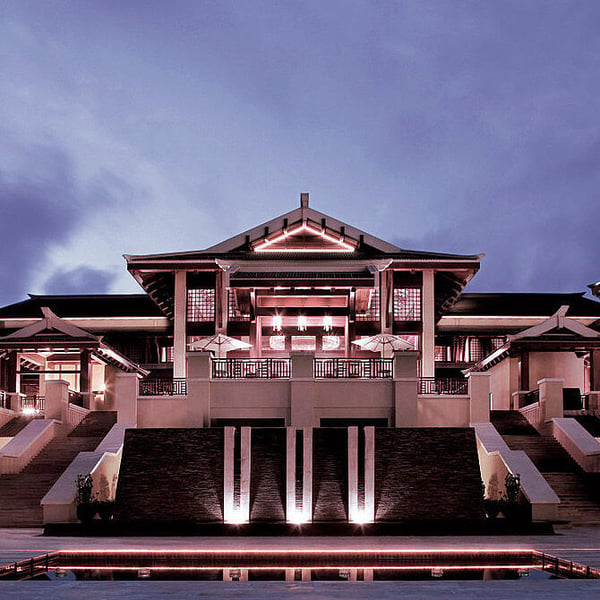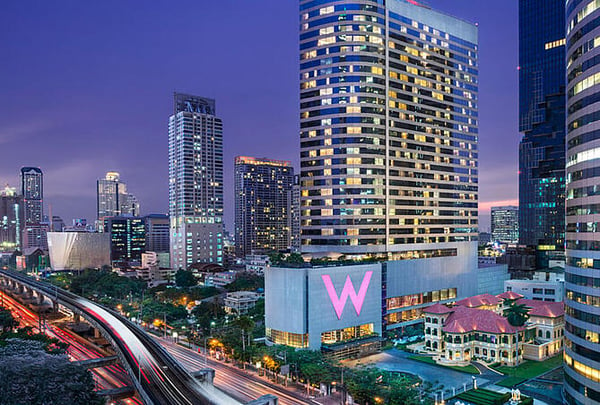On 23 September 2016, Marriott finally consummated its long-awaited merger with Starwood Hotels & Resorts, thus creating by far the largest hotel group in the world with some 5’700 hotels and 1.1 million rooms.
At the same time, the new enlarged Marriott inherited 11 brands to add to its existing 19.
As a first step towards putting some structure into this rather ungainly portfolio, Marriott divided its 30 brands into two categories in an effort to provide more clarity to customers, as well as hotel owners.

Photo credit: Marriott http://www.marriott.com/marriott-brands.mi
Marriott Global Brand Officer Tina Edmundson, who was previously Starwood’s senior vice president of brand operations, luxury and lifestyle, has created two broad brand categories, 'Classic' and 'Dis tinctive'.
The two categories are intended to define two distinct 'travel personas'; on the one hand, there is the 'classic' luxury seeker who might book at a Ritz-Carlton or St. Regis, versus the 'distinctive' luxury traveller who might be looking for a more boutique or lifestyle experience, such as Le Meridien or Westin.
The company describes the Classic brands as those offering “time-honoured hospitality for the modern traveller”, while the Distinctive brands are for “those who lean toward memorable experiences with a unique perspective.”
While this attempt to introduce some structure into the group's brand portfolio is laudable, it seems to be more directed towards internal consumption within the company, or perhaps for the benefit of some distribution intermediaries like meeting planners.
Otherwise, it is unlikely to be of much use to individual customers.

Photo credit: The Ritz Carlton http://www.ritzcarlton.com/

Brand consolidation to come?
Despite assurances from Marriott management, there has been speculation that some of the 30-odd flags will be discontinued through merging the portfolios of two or more brands.
Indeed, so far the party line has been that all of the present brands have a place in the group's business mix and will be maintained.
However, such an outcome would be surprising, as supporting such a wide range of concepts could disperse marketing efforts and maybe even confuse the marketplace.
A recent example of brand consolidation in the hotel sector is AccorHotels' extension of its ibis brand to create ibis budget and ibis Styles.
Meanwhile, TUI, the world's largest tour operator is engaging in a more drastic rationalisation which entails recentring its branding strategy on its core TUI brand to the exclusion of regional/country brands like Thomson in the UK or Arke in the Netherlands.
Which ones will fall be the wayside?
When examining Marriott's portfolio, it becomes evident that there is overlapping in terms of concept between brands and some of the flags have yet to gain critical mass.
A case in point is the group's luxury Bulgari brand.
Although the first hotel opened in Milan over a decade ago in 2004, the brand has struggled to expand due to its very restrictive locational requirements. Therefore, logically it could be a candidate for consolidation into another Marriott brand like the Luxury Collection (a former Starwood flag).

Photo credit: Bulgari http://www.bulgarihotels.com/en_US/
EDITION and Luxury Collection?
Other examples in the luxury segment are EDITION and Luxury Collection.
Plagued by conflicts with property owners, EDITION has also struggled to build critical mass with only 4 hotels in operation almost seven years after the first one opened in Hawaii in June 2010. Thus, the EDITION brand would seem to be a strong candidate for consolidation – probably into Starwood's highly successful W flag.
Even though the soft brand Luxury Collection has achieved reasonable critical mass, it could be folded into Marriott’s more recently launched Autograph Collection, which has achieved roughly the same capacity in a much shorter time.

Photo credit: W Hotels http://www.starwoodhotels.com/whotels/
Renaissance - caught in the middle?
Moving on to the upper-upscale segment, Renaissance is another logical candidate for extinction.
The brand seems to be 'caught in the middle' between Le Meridien, to which it bears some similarity (i.e. targeting creative professionals by promoting local neighbourhood arts, culture and events), and the group's core Marriott flag.
Given Le Meridien's more clearly defined brand identity, it would make sense to merge Renaissance into the French-inspired flag, even though it has a smaller footprint than Renaissance (only a little over half the room capacity).
Tribute Portfolio – a soft brand too many?
Tribute Portfolio was launched by Starwood as a soft-brand collection of independent hotels in April 2015.
Even though the number of hotels in Tribute Portfolio rose to 20 by January 2017, there would appear to be little reason to continue to maintain this collection distinct from Marriott’s soft-brand Autograph Collection.
Thus, it’s probably only a matter of time before this flag gets rolled into its erstwhile competitor, Autograph, which already includes over 100 hotel properties.

Photo credit: JW Marriott http://www.marriott.com/jw-marriott/travel.mi
Delta and Four Points lack distinctiveness
Marriott acquired Delta in early 2015, mainly with a view to increasing its footprint in Canada.
In fact, there is nothing distinctive about this rather pedestrian Canadian brand, which lacks critical mass with its less than 10’000 rooms.
Most likely the properties will be rolled into Courtyard and the core Marriott brand.
Four Points can best be described as Starwood's answer to Courtyard, but it would be hard to make the case that Four Points is an exciting brand. Given that its footprint is about a quarter of Courtyard's, it would be reasonable assume that it will be rolled into the competing Marriott flag.
